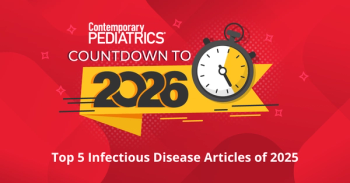
Exploring the efficacy and safety of rotavirus vaccines
Rotavirus can lead to gastrointestinal concerns that can be hazardous to children when rehydration isn’t readily available, which means that a safe, effective vaccine could be life-saving. A meta-analysis examines the safety and efficacy of available immunizations.
It’s been well over a decade since the arrival of a safe and efficacious vaccine for rotavirus. A
The investigators looked for studies using Embase, PubMed, the Cochrane Library, and Web of Science. The databases were search using search terms such as “rotavirus” and “vaccin*.” Cohort and case-control studies as well as randomized clinical trials that had more than 100 children aged younger than 5 years enrolled were included in the meta-analysis if they reported information on effectiveness, safety, or immunogenicity. The primary outcomes included rotavirus gastroenteritis, severe rotavirus gastroenteritis, and rotavirus gastroenteritis hospitalization. Outcomes for safety included serious adverse events, mortality and intussusception.
There were a total of 58 studies that met the criteria, including 20 randomized clinical trials and 38 case-control studies. These studies showed that Rotarix led to a significant reduction in rotavirus gastroenteritis (risk ratio [RR], 0.316 [95% CI, 0.224-0.345]) and rotavirus gastroenteritis hospitalization risk (odds ratio [OR], 0.347 [95% CI, 0.279-0.432]) in children who were fully vaccinated. The RotaTeq vaccine showed similar outcomes in fully vaccinated children (rotavirus gastroenteritis: RR, 0.350 [95% CI, 0.275-0.445]; rotavirus gastroenteritis hospitalization risk: OR, 0.272 [95% CI, 0.197-0.376]). They also showed high protection against severe rotavirus gastroenteritis. Among other rotavirus vaccines, there was a moderate link between reduced rotavirus gastroenteritis risk: Rotavac (RR, 0.664 [95% CI, 0.548-0.804]), Rotasiil (RR, 0.705 [95% CI, 0.605-0.821]), and Lanzhou lamb rotavirus vaccine (RR, 0.407 [95% CI, 0.332-0.499]). All of the vaccines showed no risk of serious adverse events.
The investigators concluded that high efficacy and safety profiles of the rotavirus vaccine highlighted the importance of providing the vaccine to children everywhere. The similar profiles of the Rotarix and RotaTeq vaccine can also make vaccine selection easier for public health authorities.
Reference
1. Sun Z, Fu Y, Lu H, et al. Association of rotavirus vaccines with reduction in rotavirus gastroenteritis in children younger than 5 years. JAMA Pediatr. 2021;175(7):e210347. doi:10.1001/jamapediatrics.2021.0347
Newsletter
Access practical, evidence-based guidance to support better care for our youngest patients. Join our email list for the latest clinical updates.



